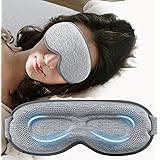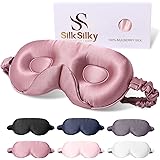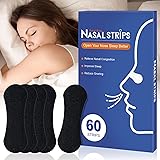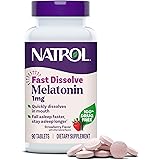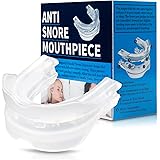Unlocking Comfort: Your Expert Guide to the Mattress in a Box Phenomenon
Are you tired of the labyrinthine showrooms, the pushy sales tactics, and the logistical nightmare that often accompanies purchasing a new mattress? As the accompanying video vividly demonstrates, the days of wrestling an oversized, unwieldy slab into your home are rapidly becoming a relic of the past. The rise of the mattress in a box has revolutionized the way we approach sleep solutions, bringing unprecedented convenience and cutting-edge design right to your doorstep.
The Logistics Revolution: How the Mattress in a Box Redefines Delivery
The concept of a “bed in a box” might initially sound like a paradox to those accustomed to traditional mattress shopping. How, after all, can a full-sized queen or king mattress possibly fit into a UPS-friendly carton? The answer lies in sophisticated compression technology. Manufacturers employ industrial-grade machinery to meticulously flatten and roll mattresses, often made from advanced foams or even hybrid constructions, before encasing them in durable, airtight plastic and then a surprisingly compact box.
This innovative approach is a game-changer for several reasons. Firstly, it drastically reduces shipping volume, leading to lower freight costs and a smaller carbon footprint per unit. More importantly for the consumer, it eliminates the need for specialized delivery services and the often-exorbitant fees associated with them. Instead, your new sleep sanctuary arrives like any other e-commerce parcel, offering unparalleled flexibility for scheduling and placement. Contrast this with the archaic “white glove” deliveries that often require specific time windows and can feel more like an imposition than a service.
Decoding the Unboxing Ritual: More Than Just Cutting Plastic
The video above perfectly captures the elegant simplicity of unboxing a mattress in a box. Sliding the compressed cylinder out of its carton and unfurling it from its protective plastic shroud is undeniably a satisfying moment. What happens next, however, is a fascinating interplay of material science and engineering.
Once the vacuum seal is broken, the mattress begins its journey of re-expansion. This isn’t just a simple “poof” into shape; rather, it’s a gradual, controlled process. The foam cells, previously compressed to mere fractions of their original size, slowly re-inflate as air fills the voids. In hybrid models, pocketed coils, which were also compressed, rebound to their full height. This initial expansion is often rapid, giving the impression that the mattress is ready for immediate use. However, as our narrator wisely advises, patience is a virtue in this scenario.
The Critical 72 Hours: Understanding Full Expansion and Off-Gassing
The instruction to “give that mattress 72 hours to fully take shape” is not an arbitrary suggestion; it’s a crucial directive rooted in the very nature of compressed materials. During this period, the internal structure of the foam or hybrid components fully recovers, ensuring optimal firmness, support, and longevity. Rushing the process by sleeping on it prematurely can impede this complete decompression, potentially leading to uneven support or a sub-optimal feel.
However, beyond mere physical expansion, this 72-hour window also addresses another important aspect: off-gassing. Like a new car or fresh paint, new foam products can release volatile organic compounds (VOCs) as they decompress. This is often perceived as a “new mattress smell.” While modern mattresses, especially those certified by bodies like CertiPUR-US, are rigorously tested to ensure low VOC emissions, allowing for adequate ventilation during this initial period is always recommended. This gives any residual odors time to dissipate, ensuring a fresh and inviting sleep environment.
Beyond Plush and Comfortable: Material Science and Sleep Ergonomics
When the video promises a “perfect, plush, comfortable bed,” it’s hinting at the sophisticated engineering beneath the surface. The comfort of a mattress in a box isn’t merely subjective; it’s a result of carefully layered materials designed to provide specific ergonomic benefits. Common types include:
- Memory Foam: Known for its viscoelastic properties, memory foam conforms to the body’s contours, offering exceptional pressure point relief and motion isolation. This makes it an excellent choice for side sleepers or couples who don’t want to disturb each other’s sleep.
- Polyfoam: A versatile and durable foam used in various densities for support layers, transition layers, and sometimes even comfort layers. Its open-cell structure often allows for better airflow than traditional memory foam.
- Latex: Derived from rubber trees, latex offers a buoyant yet supportive feel, often described as responsive. It’s naturally hypoallergenic and highly durable.
- Hybrid Mattresses: These combine the best of both worlds, typically featuring an innerspring coil support core topped with layers of memory foam, polyfoam, or latex. This construction offers the robust support and breathability of coils with the contouring comfort of foam.
Expertly engineered layering systems aim to balance “plush” comfort (often from softer top layers with lower ILD or Indentation Load Deflection ratings) with underlying “support” (provided by denser, firmer core layers). This ensures proper spinal alignment, crucial for mitigating back pain and promoting restorative sleep.
Choosing Your Ideal Sleep Sanctuary: Expert Tips for Online Shoppers
Navigating the plethora of online mattress options requires a nuanced understanding beyond the simple unboxing process. While the convenience of a mattress in a box is undeniable, selecting the right one necessitates a keen eye for detail. Consider these expert tips:
- Understand Your Sleep Position: Side sleepers generally benefit from softer mattresses for hip and shoulder cushioning, while back and stomach sleepers typically require firmer surfaces for spinal alignment.
- Research Material Composition: Don’t just look at the top layer. Dive into the specs to understand the density (measured in pounds per cubic foot) of foam layers and the gauge of coils in hybrids. These metrics are critical indicators of durability and support.
- Trial Periods Are Key: Most reputable online brands offer generous in-home trial periods (often 100 nights or more). This allows you to truly test the mattress in your own environment, far surpassing a five-minute showroom lie-down.
- Read Expert Reviews (and Disregard the Extremes): Look for detailed, independent reviews that delve into long-term performance, motion isolation, edge support, and temperature regulation. Learn to sift through hyperbole, focusing on consistent patterns.
Embracing the mattress in a box model doesn’t mean sacrificing quality or informed decision-making. On the contrary, it empowers consumers with transparent information and a streamlined path to a better night’s sleep, all delivered with the unparalleled ease you witnessed in the video.




